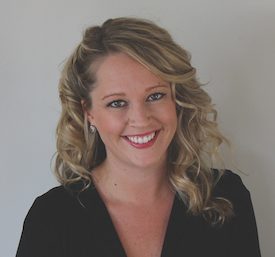For the last several months, data on reverse mortgage volume has illustrated a steady descent as the industry has struggled to regain its footing in the wake of program changes.
The most recent data from Reverse Market Insight pinpointed a near 36% low as the new normal for HECM endorsements.
But does this tell the whole story?
Five lenders now originate proprietary reverse mortgage products, offering equity access to borrowers with higher home values who are shut out of the HECM because of its maximum loan limit of $726,525.
They include Finance of America Reverse, Quicken Loan’s subsidiary One Reverse Mortgage, American Advisors Group, Reverse Mortgage Funding and Longbridge Financial.
These lenders all offer privately insured loans that are ideal for homeowners with properties around the $850,000 mark and come free of costly mortgage insurance. And, they are offered through retail channels and by brokers in most states.
The problem is, there is no way to tell just how many of these non-agency loans the industry is collectively closing.
Individually, lenders report that these loans are taking up a greater share of their overall business, but all of them decline to offer specifics.
One Reverse CEO Gregg Smith told HousingWire that the interest in its proprietary reverse mortgage, the HELO, has been “overwhelming.”
FAR President Kristen Sieffert said the variations of its HomeSafe product are “a growing share of our business” and that the lender has been “pleased with the reception” so far.
AAG said its offering has “emerged as a popular choice” for older, wealthier seniors exploring retirement planning.
Lest this all seem too self-serving, note that even some independent counseling agencies are reporting strong borrower interest.
Jennifer Cosentini of Cambridge Credit Counseling said the number of borrowers they’ve seen who are seeking information on jumbo reverses has jumped from about 17 per month to 80, a trend that started in October and hasn’t let up.
But absent real data, this conjecture is mostly meaningless.
Is the reverse mortgage industry seeing sizeable interest in its jumbo offerings?
Are borrowers with greater property values actually interested in accessing their equity through a reverse mortgage?
Is part of the HECM volume slump attributable to the fact that more originators are closing jumbos instead?
No one knows for sure.
John Lunde, president of Reverse Market Insight – which produces HECM reports based on HUD data – said his company has been in ongoing discussions with the lenders that offer proprietary products.
“We believe that over time they will likely find value in reporting on proprietary products, but that time has not come yet,” Lunde said, adding that lenders are wary that the sharing of private data could expose them.
“It's always a balance between the value of reporting and any business risk to sharing sensitive data, which we fully understand and support,” Lunde said.
HousingWire reached out to the five lenders with proprietary offerings for comment as to whether or not they would be receptive to participating in a report collated by an independent third party.
Finance of America Reverse said that as of now, the volume is not great enough to warrant any kind of data collation.
“The current size and diversity of industry market participation is too nascent to glean any meaningful analysis from such data,” a FAR spokesperson said. “As this exciting part of the reverse mortgage industry continues to grow and mature with broader and more representative lender participation, then such data could be more useful.”
AAG declined to comment and RMF failed to respond, while a One Reverse spokesperson said simply that, as a private company, the lender does not disclose volume by product.
But Longbridge Financial said that it would be open to the idea.
“Longbridge is committed to greater visibility and growth in the proprietary reverse mortgage market,” said CEO Chris Mayer. “We already report and pay assessments to NRMLA based on our proprietary volume and are willing to work with our peers to develop a reporting framework that includes all NRMLA members.”
Mayer said he believes proprietary loans are taking over a greater share of overall reverse mortgage volume, as few HECMs are taken out on homes that exceed FHA’s maximum home value.
“Almost surely, some borrowers with high-priced homes are choosing a proprietary reverse mortgage instead of a HECM,” Mayer said. “In our experience, proprietary reverse mortgages are expanding the market and allowing originators to find new ways to grow their business.”
Lunde agreed that interest in proprietary products is likely growing, but added that the private market is not yet developed enough to compete with the HECM.
“I do believe that proprietary reverse products are filling several gaps around the HECM underwriting profile currently, particularly in the higher home value space and niches around home purchase process restrictions or property types not approved by FHA,” he said. “We're not yet at the point where HECM is competing head to head inside the HECM underwriting profile the way traditional mortgages compete against FHA products on the forward side, but that is the long-term path of the industry as it matures.”
For now, it seems the private market has a ways to go before lenders are willing to reveal any stats. Lunde echoed FAR’s assertion that, as of now, the volume isn’t there to warrant it.
“The industry is still not quite there in terms of volume and diversity of proprietary production to tip the scales in favor of seeing reporting on this topic yet,” he said.






